The Majesty of Herod’s Temple
A Boy’s First Visit At Passover
The Temple of Jesus’ time was built by Herod the Great. Appointed by the Romans, Herod was king of Judea from 37 to 4 B.C. He had the dubious reputation of being the most unpopular king in Jewish history and was infamous for his tyranny, extreme cruelty, and slavish obedience to the Romans. In an attempt to win the favor of the Jewish masses, Herod did two things: He married into the Hasmonean family (the Jewish line of Maccabean leadership that had revolted against the previous Greek oppressors of Israel), and he remodeled the Temple on Mount Moriah.
There was nothing Herod could do, however, to earn the regard of the Jewish people. He totally defied Jewish tradition and its national interests and displayed an enormous thirst for power. Because of his constant fear of conspiracy against him, Herod had virtually everyone close to him put to death, including his wife.
In spite of all the grief and fear he brought to the Jewish people, Herod was a master builder, and the Temple (with its accompanying Temple Mount) was the crowning jewel of his achievements. Its size was enormous, covering an area of 40 acres. Herod employed 10,000 men (largely slave labor), along with Roman craftsman, and took approximately ten years to build the Temple Mount complex. Its highest wall was 158 feet from bedrock; its length was roughly equivalent to five football fields end to end and about 1,000 feet wide. The quarried limestones ranged from three to thirty feet long and from three to six feet high. These stones weighed from one to forty tons each. The joints were dry mortared, joined with paper-thin precision. The engineering necessary to construct the walls surrounding and supporting the Temple complex and the Temple itself was nothing short of genius.
It was to this magnificent structure that Jewish pilgrims from all over the Mediterranean world came to worship. The following story depicts such a possible pilgrimage, a young Jewish boy’s first Passover visit to Herod’s Temple and city.
“Father, will there be lots of people there? Will we see any Roman soldiers? How long can we stay at the Temple? Where will we get the sacrifice? Can I watch when it’s offered? Will we see Uncle Isaac when we get there? … How much longer till we see the Temple?”
While it was not unusual for eight-year-old Jacob to be asking so many questions, they were becoming more taxing to answer with each step of the journey. Joseph knew that his son was excited, but it had been a long trip from Cana. Even though this was the first Passover his son would celebrate in Jerusalem, enough was enough!
The truth was that Jerusalem would be very crowded during Passover. This city, which usually had over 80,000 people living in the three-square-mile area within its walls, would swell with an additional 100,000 pilgrims milling around its already busy streets. With the anticipated excitement and extra population, Joseph was certain that his son would see plenty of Roman soldiers, especially on the Temple Mount. The reason was simple: A special cohort of soldiers watched the Temple area closely, and they lived in the barracks of the Antonia Fortress located on the edge of the northern platform of the Temple Mount. This imposing four-towered structure provided an excellent view of the Temple Mount and an ample supply of Roman soldiers who would leap into action at the first hint of disturbance. Any unusual developments received their quick and undivided attention! Joseph understood that their presence was necessary, but that did not make him any happier about it. The fact that his nation had to live under Roman occupation took the edge off the celebration of Passover, at least in his mind. The purpose of Passover was to celebrate God’s provision of redemption from their Egyptian bondage centuries ago, but Roman soldiers patrolling around Israel’s most sacred site were a present-day reminder of what his forefathers had experienced in Egypt. Joseph hoped that this would be the last Passover under Roman occupation!
Rome’s influence was not entirely bad, however. Herod, the current king, was not Jewish by birth, but this ruler placed over them by Rome was an expert builder. The Temple Mount complex in Jerusalem had become the jewel of Herod’s engineering accomplishments. Some called it the eighth wonder of the world. Since he was despised by most of the Jewish population, Herod had constructed a marvelous Temple hoping to win the popular sentiment to his side. Joseph was convinced that Herod would never succeed in this attempt, but he had to admit that he had built a magnificent structure.
As father and son came over the top of the Mount of Olives from Bethany, the brilliant grandeur of Jerusalem appeared before them. Joseph did not offer any word of explanation to his son; Jacob’s gaping mouth and widely dilated pupils told his father that any words at this special moment would fall on deaf ears. Joseph paused long enough for Jacob to drink it in and then continued slowly down the well-worn path to the Kidron Valley. But his pace was now much slower, not only for his son’s sake, but for his own benefit as well. He had seen Herod’s Jerusalem several times before, but the visual impact of the mammoth white limestone structures still took his breath away.
They slowly wound their way down the steep path that led to the Kidron, and Jacob followed his father as they turned, continued south, and entered the section of town referred to as the Lower City. As they walked through the Water Gate, Jacob was overwhelmed by the crowded streets and the many small houses seemingly telescoped into one another in which the not-so-wealthy residents of Jerusalem lived.
He was soon aware that they were climbing again, aided by well-constructed steps that led to another elevated section of the street. As they continued climbing toward the Temple, Jacob glanced over his shoulder to catch a glimpse of the beautiful Pool of Siloam. Almost tripping over another set of steps, his eyes were drawn ahead and upward. On this main north-south street through the city, Jacob could see the Temple. Its gleaming spires pierced the clear blue sky at such a high elevation that even one as short as Jacob could spot them above the throng of people.
As Joseph and Jacob continued on toward the Temple, they came upon a very busy intersection. Jacob was convinced that every Jew in the Roman Empire must be in Jerusalem for Passover. Farmers and merchants were searching for open areas in which to set up their roughly hewn wooden tables and display fruits, vegetables, wine, bread, and many other products to sell to the pilgrims.
Father and son then turned right and entered the area of the giant plaza that extended across the southern base of the Temple Mount (over 900 feet). Jews from all over the Mediterranean basin had congregated on this plaza, and the mixture of languages that filled the air played a tune in Jacob’s ears that sounded like hundreds of children speaking at once. He loved the excitement but couldn’t understand one word being spoken!
Before climbing the gigantic stairway (over 200 feet wide at this point and about 100 feet from its foundation at the plaza level to the base of the wall), the pair from Cana stood in awe as they examined the face of the southern wall. The boundary line for this wall extended Solomon’s original Temple area to twice its size (now about 40 acres). The height of the tallest section of the wall (the southeast corner) rose 158 feet from bedrock (over 15 stories). The wall was constructed of polished white limestone ashlars averaging three feet high and ten to thirty feet long. These finished stones weighed anywhere from one to forty tons (depending on their size) and were laid horizontally on top of each other and side to side with such precision that the spaces between them were barely the width of a sheet of paper. As Jacob’s eyes continued upward, searching for the top of the wall, he noticed a change in the face of the wall. About two-thirds of the way up, it looked as if pillars grew out of the face of the wall! These engaged pilasters, as they were called, were the signature of a Herodian building or wall. Joseph explained to his son that on the southwest pinnacle of the Temple wall, a priest would stand and blow the shofar (trumpet) to call the faithful to worship. From that pinnacle, the whole of the city could be seen.
As they stood there taking in the sights, Jacob soon noticed people going slowly in and out of a ritual bathhouse to his right. He was told that they were performing ceremonial purification rites before entering the Temple area. He also noticed priests going in and out of another building further to his right (east). His father explained that that portion of the Temple area was a storeroom for supplies the priests would use during Passover.
Climbing the great stairway was an experience unlike anything Jacob had encountered before. The steps were laid out in alternating short and long distances, making it difficult to establish a rhythm while climbing. Joseph explained that the steps were intentionally designed to cause those approaching the Temple Mount to do so slowly and deliberately, encouraging a humble attitude of worship as they entered the Temple. Jacob did not fully understand his father’s explanation, but being forced to climb the steps slowly allowed him to count each one—all 30 of them! At the top of the stairway Joseph and Jacob entered the Double Gate, through which all pilgrims from the southern part of the city entered the Temple area. The Triple Gate, farther east along the wall, was reserved for the priests. As Jacob watched the priests enter their special gate, he wished he could peek in and see what it was like. But his curiosity would have to wait for another time to be satisfied.
The 20-foot-high Double Gate in the southern wall of the Temple was relatively plain outside, but the scene inside the gate offered a beautiful introduction to the Temple’s beauty. Jacob had never seen such impressive columns. They were elaborately carved and supported a series of ornate domes that covered the ceiling of the entranceway. But that was just the beginning! As Joseph led his son up the passageway to the floor of the Temple Mount, the noise they had left behind on the plaza below resumed. As the two pilgrims reached the top of the stairs, they were greeted by robust discussions and even greater beauty.
They had entered the Royal Stoa, the scene of commercial and religious transactions. The Stoa ran almost the entire length of the southern wall and was divided into three sections by four rows of columns (40 columns in each row, each one 50 feet tall). Jacob felt as if he were in a forest of columns! The rows produced an open colonnade that eventually led out (on the northern side) to the Temple Mount. He tried to wrap his arms around one of the columns, but his father laughed at his effort, saying, “Jacob, you’re just a boy. It would take three men with their arms fully stretched out to reach around one of those columns!”
At the eastern end of the Stoa was a semicircular aspe where the Sanhedrin met. Jacob could barely see the aspe for the throng of people who were buying or selling animals for sacrifice or exchanging money for coins to use in the Temple area. What a racket! Jacob wondered why people went to the trouble of carefully walking up the irregular steps to the Double Gate to demonstrate an attitude of worship and then began arguing and shouting on the Temple Mount. Adult logic does not always make sense to young minds.
Joseph explained that this was where he and Uncle Isaac would come on the evening of Passover. They would exchange their money at one of the moneychangers’ tables and then purchase the best possible animal for sacrifice. But since that was a couple of days away, Joseph suggested that they do some sight-seeing. A little observation and some questions now would save time later, when time would be an important commodity.
As Jacob watched the crowds pass by on the platform entering the Temple Mount, he was impressed by the size and design of the stairway leading into the Temple area. The platform extended west over the Tyropean (Cheesemakers) Valley below, spanning the distance via a large arch under the platform. At that point steps led down to another small platform that turned at a right angle and led down to the valley and street below. Jacob’s eyes followed the people as they went down to the street, and he discovered something fascinating. “Look, father,” he exclaimed, “all of those people are going down the same street we came up.” The northnd;south street on which Jacob and his father had entered Jerusalem earlier that morning was joined by this large, arched stairway. Jacob then realized that there were two ways to enter the Temple Mount from the Lower City: by the broad steps, which he had come up, and by the arched stairway.
Jacob watched the people going south toward the Water Gate. As his eyes scanned the southern section of the city, it was difficult to catch all of the details because the early morning sun was now washing over the shadows of the buildings and people. The Palestinian sun had a way of making white limestone buildings look like a blaze of luxuriant fire. Squinting took the joy out of watching, but still Jacob took in all he could.
Suddenly a burst of noise from below the platform caught his attention. As he looked down, he saw some merchants arguing over who had the finest imported fabrics at the best price. It seemed to Jacob that half of the western wall beneath him was lined with shops. He then noticed that people were not only coming into the city from the south, but, as his eyes followed the line of shops northward, he could see that the major north-south street ultimately led to a large gate on the north side of the town.
“Father, what’s that gate off in the distance?” Jacob asked while pointing north. “That’s the Damascus Gate,” Joseph answered. “If you follow that road long enough, it will take you all the way to Damascus.” Jacob’s response to his father’s explanation was “Oh!”
Then Jacob suddenly realized that there was yet another stairway and platform to the north of where he was standing that also led onto the Temple Mount. Rather than starting in the valley or on the major north–south street, this very long platform extended west to the Upper City. Of course, this led to the obvious question from Jacob: “Why?”
Joseph explained that the long platform (which ended behind the Hasmonean Palace) provided immediate and quick entrance onto the Temple Mount for the residents of the Upper City, the section of town where the wealthy, influential, and politically powerful people lived. Herod’s palace was up there; the house of the high priest was up there; anyone of importance in Jerusalem society lived in the Upper City.
“You mean they have their own entrance to the Temple?” asked Jacob. “That’s right, son,” Joseph answered. “By using their own private entrance, they avoid contact with anything that might defile them or make them unclean before they enter the Temple to worship.” Jacob thought he understood. But if those living in the Upper City were afraid of being contaminated by walking through the Lower City to enter the Temple, what did that mean for the people who lived in the Lower City? Again, adult ways did not correspond with the young mind’s view of things.
After answering all his questions about what he had seen and heard, Joseph took his son’s hand, and the two began to descend the stairs to the Tyropean Valley. Jacob had certainly seen and experienced a lot in one day. What a beautiful Temple God had provided in which they could worship. Even if it had been built by Herod, a man who was sometimes wicked, it helped Jacob to appreciate the beauty, magnificence, and holiness of the God he had come to love.
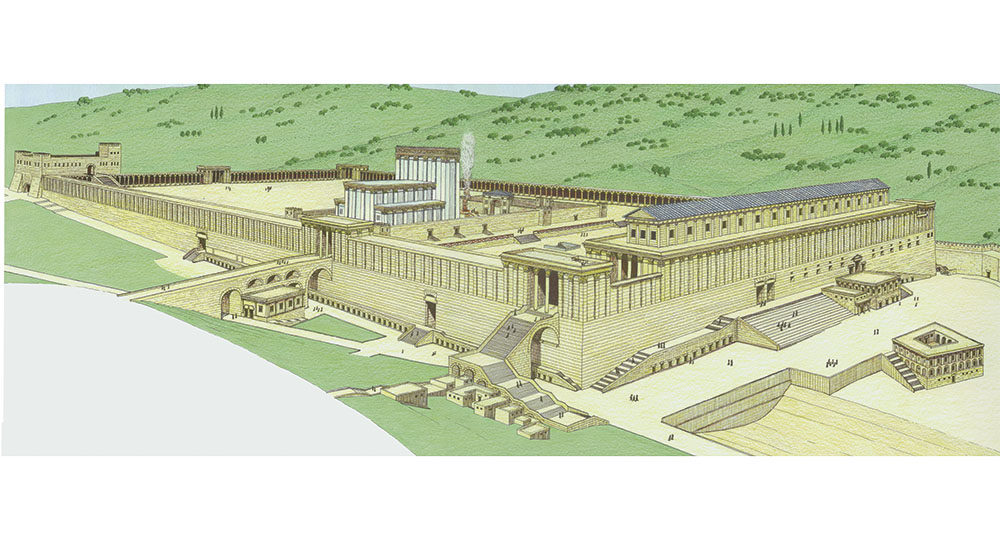
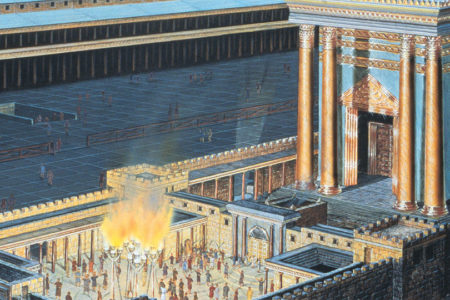
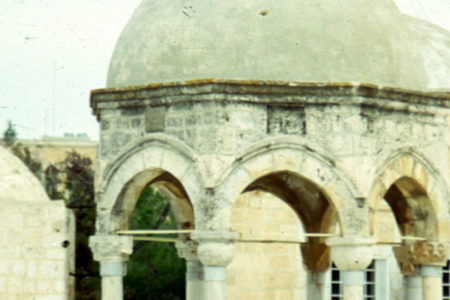
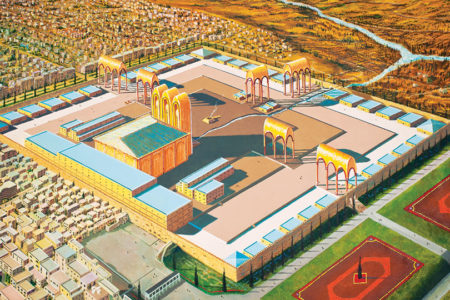
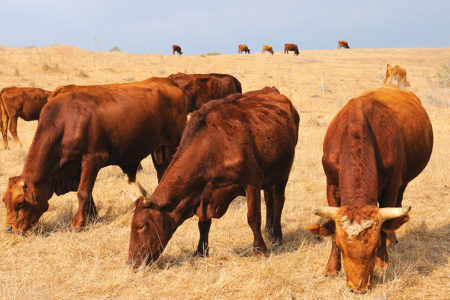
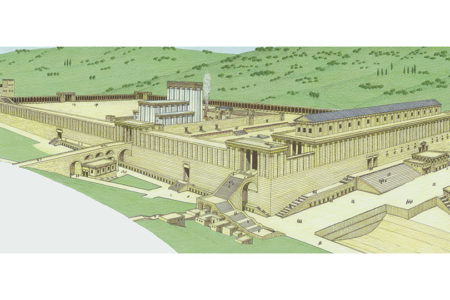



This was a beautiful article and very well presented. I loved the story and forwarded it to my husband, who will probably also love it.